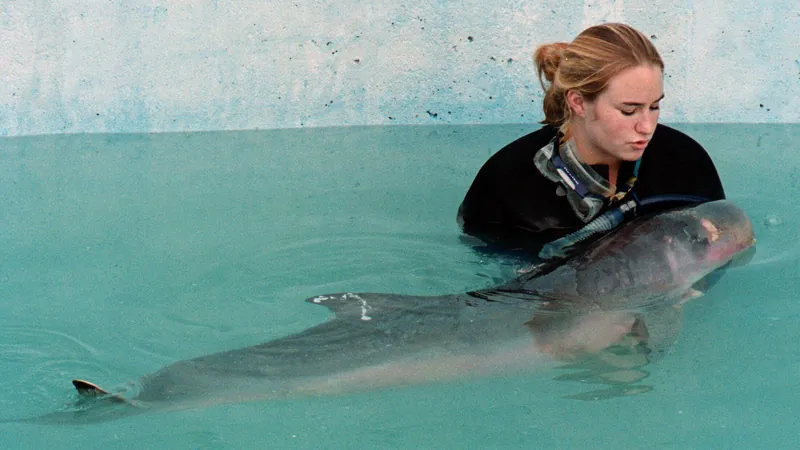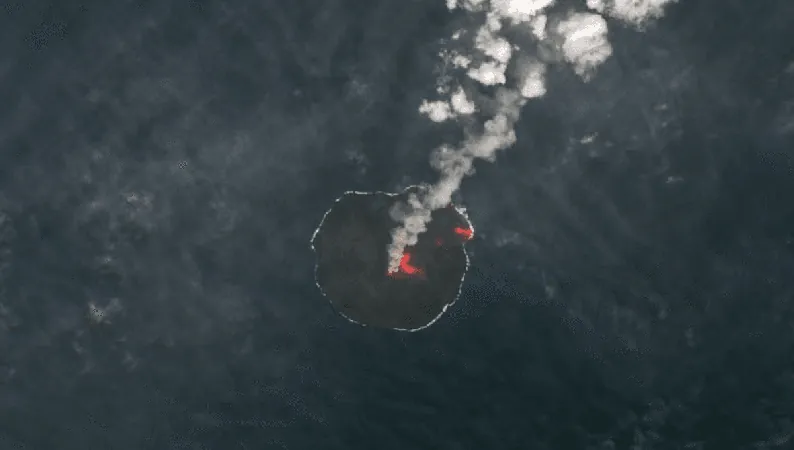
Dwarf Sperm Whales: The Pint-Sized Marvels That Create a Mysterious Red Cloud
2025-06-28
Author: Ying
A Unique Defense Mechanism
When faced with danger, dwarf sperm whales—standing at a mere 8 feet 10 inches long—have a fascinating and peculiar defense strategy: they unleash a torrent of intestinal fluid, turning the surrounding water a striking red.
The Smallest of the Whales
These diminutive creatures, the smallest species of whale, are even smaller than several dolphins, including Risso's dolphins and bottlenose dolphins. Initially confused with pygmy sperm whales, it wasn’t until 1966 that scientists recognized them as a separate species.
Elusive by Nature
Inhabitants of deep waters, dwarf sperm whales are notoriously difficult to study due to their tendency to avoid boats. Known for their relaxed demeanor, they usually glide gracefully beneath the waves, only diving dramatically when startled, often accompanied by a release of their unique protective liquid.
An Ink-Like Escape
The remarkable liquid they expel resembles ink, acting as a smokescreen against potential predators like sharks and orcas. Remarkably, each whale can release over three gallons (11 liters) of this dark, reddish-brown fluid from a special sac in their intestine—truly their version of a giant squid's ink defense.
Challenges and Threats
Despite their intriguing adaptations, dwarf sperm whales face significant threats from pollution, vessel strikes, and entanglements. Their populations are also vulnerable to predation from large sharks and orcas.
Lifespan and Social Structure
These whales can live up to 22 years and are often spotted in small pods of no more than 16 individuals. While much about their social structures remains a mystery, they exhibit a preference for deep waters where they can dive over 1,000 feet (300 meters) in search of food.
Diet and Foraging Techniques
Dwarf sperm whales primarily feast on a diet of deep-sea squid, octopus, crabs, and fish. They navigate the ocean depths using sophisticated echolocation, allowing them to hunt effectively near the nutrient-rich continental shelves.


 Brasil (PT)
Brasil (PT)
 Canada (EN)
Canada (EN)
 Chile (ES)
Chile (ES)
 Česko (CS)
Česko (CS)
 대한민국 (KO)
대한민국 (KO)
 España (ES)
España (ES)
 France (FR)
France (FR)
 Hong Kong (EN)
Hong Kong (EN)
 Italia (IT)
Italia (IT)
 日本 (JA)
日本 (JA)
 Magyarország (HU)
Magyarország (HU)
 Norge (NO)
Norge (NO)
 Polska (PL)
Polska (PL)
 Schweiz (DE)
Schweiz (DE)
 Singapore (EN)
Singapore (EN)
 Sverige (SV)
Sverige (SV)
 Suomi (FI)
Suomi (FI)
 Türkiye (TR)
Türkiye (TR)
 الإمارات العربية المتحدة (AR)
الإمارات العربية المتحدة (AR)